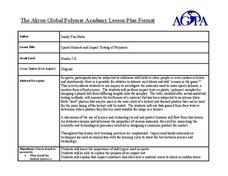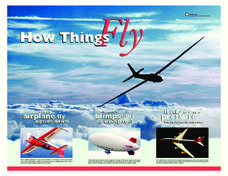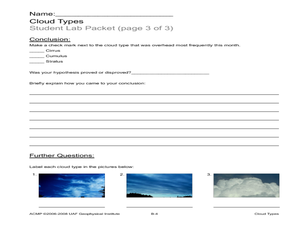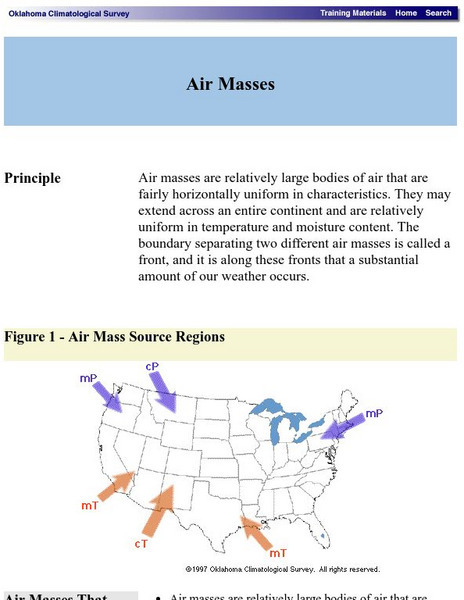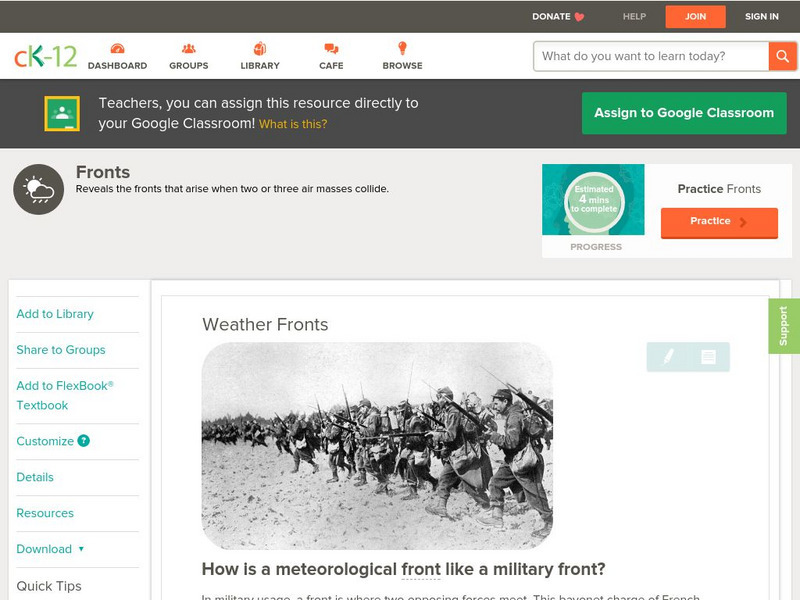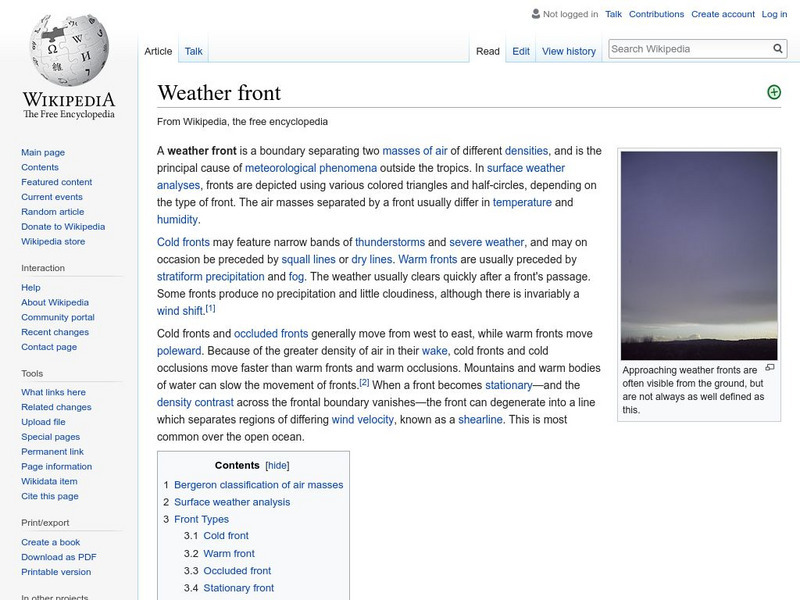Alabama Learning Exchange
Researching Hurricanes with Technology
High schoolers explain the components that make up a hurricane.
Curated OER
Atlantic Canada Report
Ninth graders create a report that will show an in-depth knowledge of the various geographical and climatic features of Atlantic Canada. They produce various items, on paper and using the computer, to demonstrate knowledge of outcomes,...
Curated OER
Introduction to Climatology
Students are introduced to the topic of climatology. In groups, they use the Digital Atlas of Idaho to identify the layers of the atmosphere and review concepts of weather. To end the lesson, they examine different photographs and...
Curated OER
Matter, Matter, Everywhere!
Eighth graders make inquiry about the existence of matter. A definition of the word is needed before students can engage in various activities. The application of knowing about matter is done in the working of experiments.
Curated OER
Newton's Second Law of Motion with Balance Toys
Students discuss acceleration and deceleration and participate in brief demonstrations of the Second Law of Motion. They apply the law to a metal balance toy and a plastic balance toy by applying the same force then with different forces.
Curated OER
Meteorology
Seventh graders examine the job of meteorologists. They decide which characteristics of the atmosphere that meteorologists focus on. They use local weather maps from newspapers to predict weather in their area.
Curated OER
Clouds
Students explore clouds. In this weather lesson, students identify the steps in the water cycle, define condensation and evaporation, and relate this information to cloud formation. Students perform a cloud experiment,...
Curated OER
Newton's Laws: Making Simple Rockets
Students can use rocketry to understand Newton's Three Laws of Motion.
Curated OER
Science Word Search
In this science worksheet, students locate and identify various vocabulary terms related to earth science. There are 44 words/phrases located in the puzzle.
Curated OER
Sports Helmets and Impact Testing of Polymers
Students examine the importance of good quality safety gear. In this investigative lesson, students will tests various polymers, collect data, and analyze the data to determine which polymer is best for safety helmets. They will design a...
Curated OER
Planning a Tourist Resort
Students work in teams of 2 to complete the presentation portion of the assignment. They may be required to work alone or may work with their partner to complete the "Board Member's Responses."
Curated OER
How Things Fly
Students explain basic principles of aeronautics such as gravity and lift. In this How Things Fly lesson, students visit the interactive, hands-on How Things Fly gallery at the Smithsonian. Students perform three experiments that...
Curated OER
Geometry: Practical Applications of the Distance Formula
Students, working independently and in groups, apply the distance formula to practical situations. After solving various problems, students in pairs design coordinate planes from the school blue print to measure the distance from the...
Curated OER
Cloud Types
Students examine cloud types. In this cloud lesson plan, students identify cloud types, observe clouds and collect data, and analyze data to identify the most common cloud they observe overhead during the course of a month.
Curated OER
Nuclear Transplants
Young scholars model the removal of a cell nucleus and the insertion of an alternate control center. They define some of the challenges faced in this type of transplant procedure. Students discuss cloning.
University of Illinois
University of Illinois Urbana Champaign: Air Masses and Fronts
What are air masses and where do they originate? What happens to the weather along fronts? Learn about warm and cold fronts and different types of advection. Maps and animated illustrations make these topics easier to comprehend.
Scholastic
Scholastic: Study Jams! Science: Weather & Climate: Air Masses & Fronts
A video and a short multiple-choice quiz on the topic of air masses and fronts. It describes the types of weather fronts, what an air mass is, and the four types of air masses in the US.
University of Illinois
University of Illinois Extension: Ww2010: The Boundaries Between Air Masses
Describes the different types of fronts and the dry line associated with certain fronts. Well illustrated with diagrams and maps.
Oklahoma Mesonet
Oklahoma Climatological Survey: Air Masses
This Oklahoma Climatological Survey explores how air masses form, as well as the weather formations, which tend to appear on the edges of these masses in what is known as a front.
CK-12 Foundation
Ck 12: Earth Science: Weather Fronts
[Free Registration/Login may be required to access all resource tools.] Describes the weather fronts that occur when two air masses collide. Includes downloadable handouts.
Science Struck
Science Struck: Explanation of an Occluded Front With Diagram
Explains what an occluded front is and how it forms when three air masses interact.
CK-12 Foundation
Ck 12: Earth Science: Weather Fronts
[Free Registration/Login may be required to access all resource tools.] Describes the fronts that occur when two air masses collide.
Wikimedia
Wikipedia: Weather Front
This Wikipedia site tells all about weather fronts, or boundaries between two air masses with differing characteristics. Includes many hyperlinked terms to additional information on related subjects.
Other
Physical geography.net: Introduction to the Atmosphere
A very detailed description of air masses, how they move and interact, and what weather takes place when this happens.











